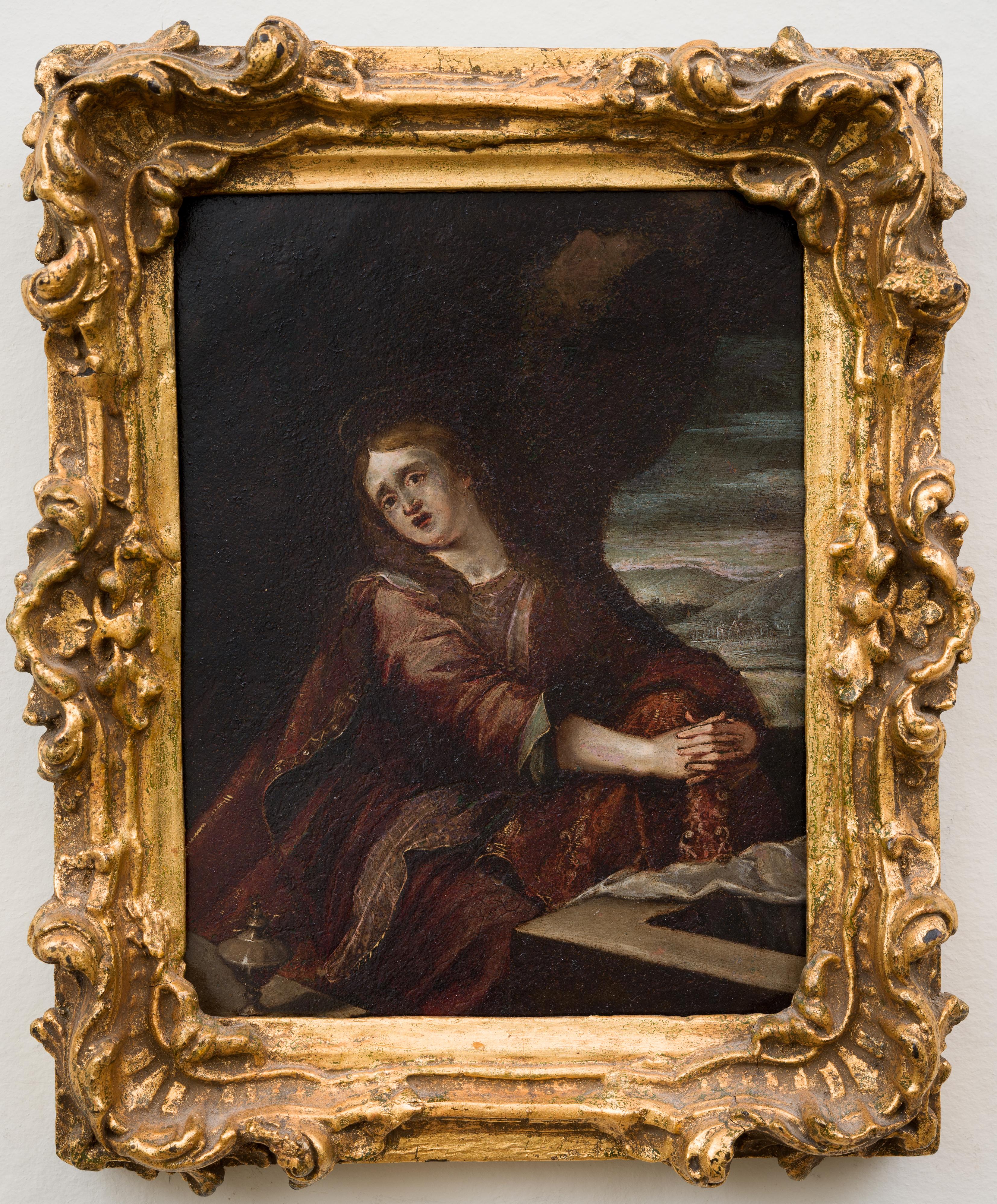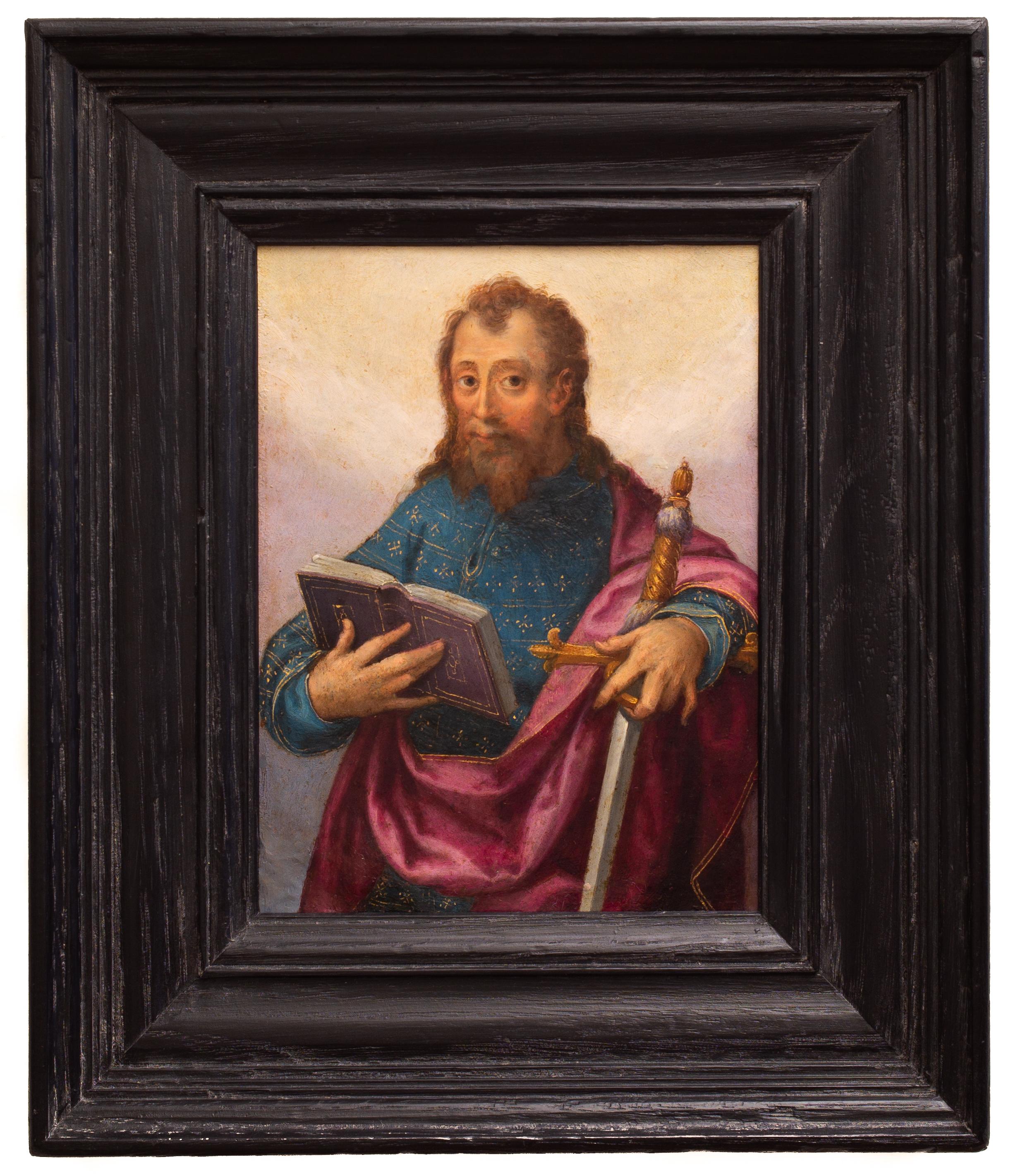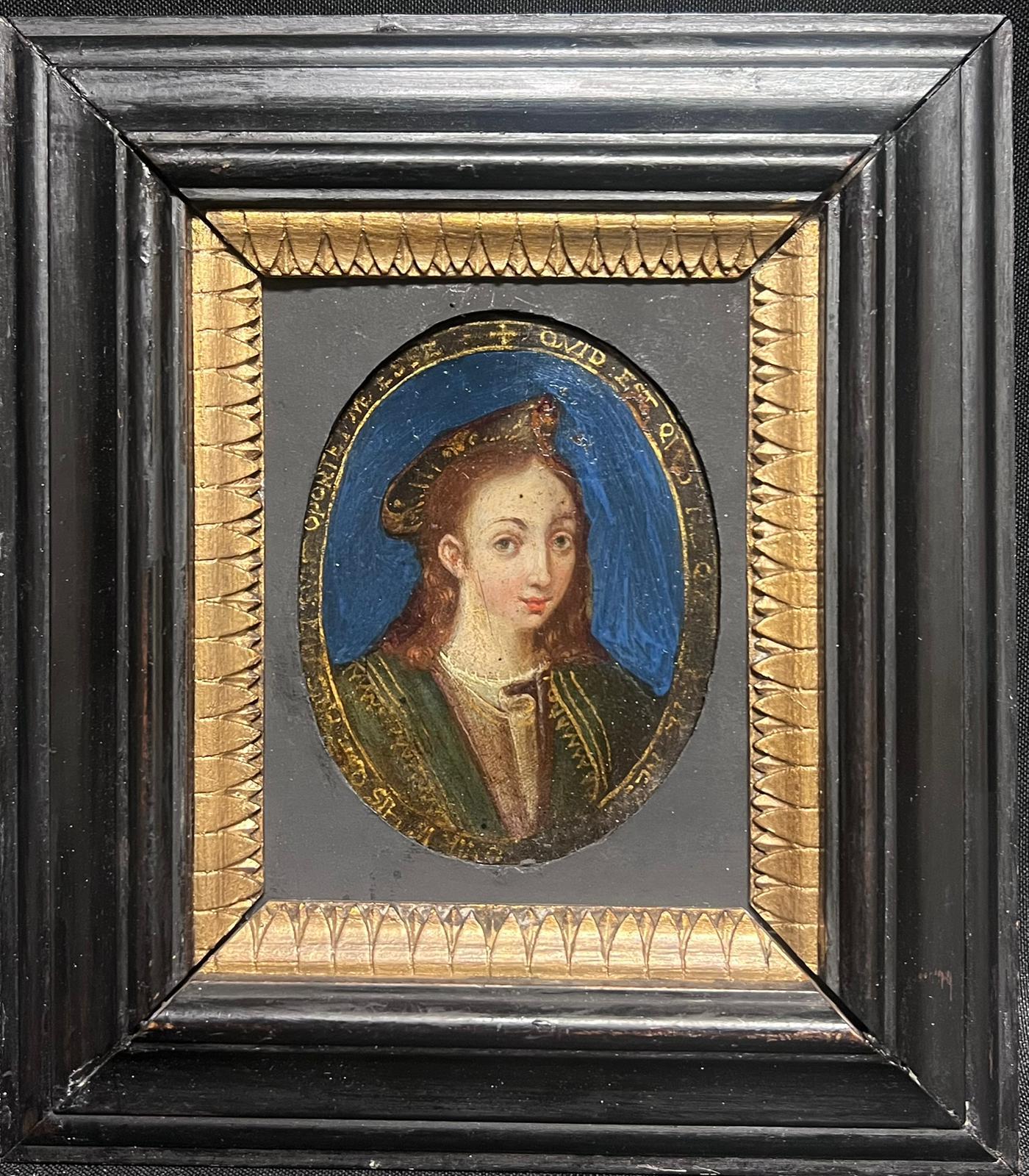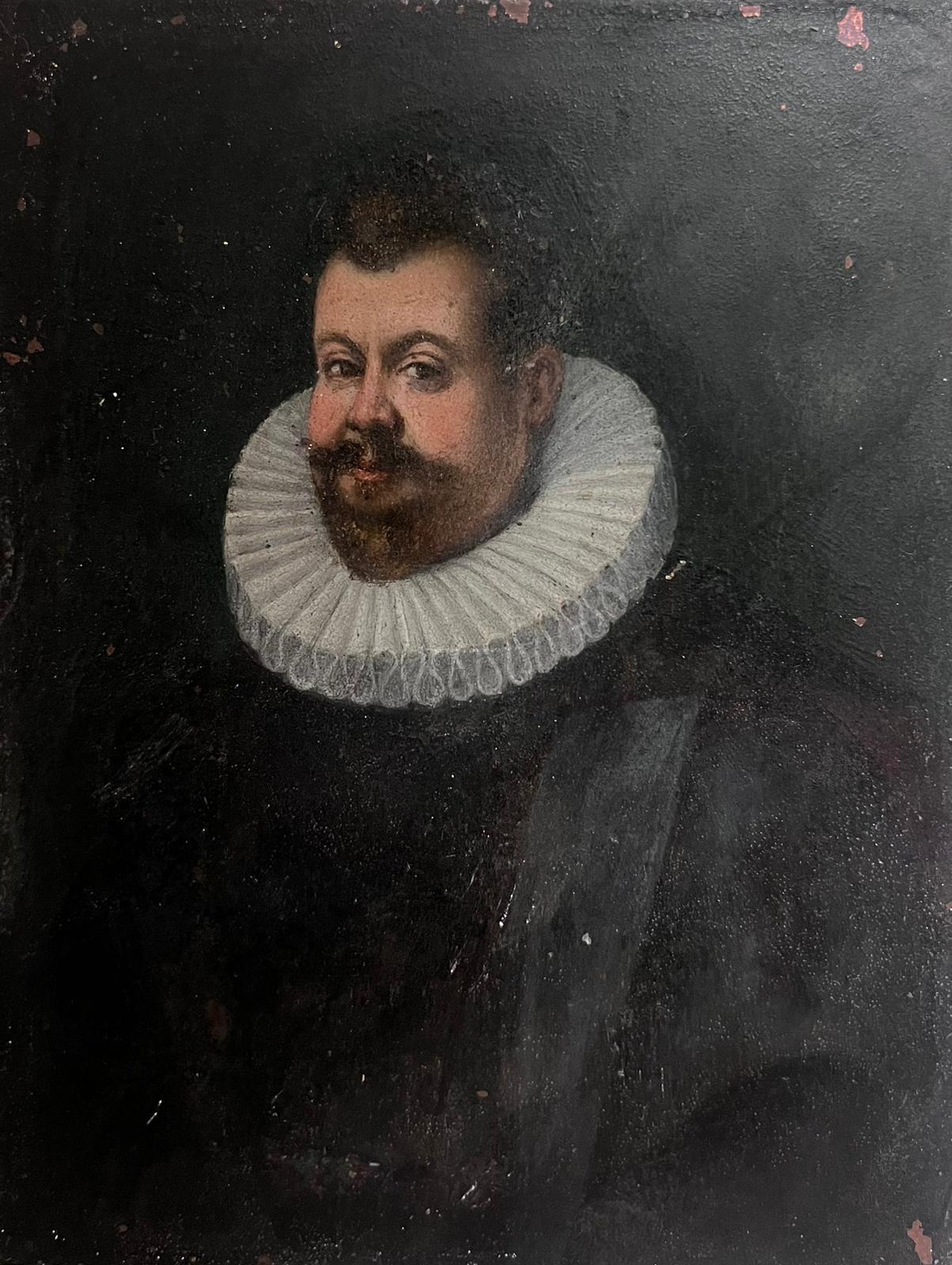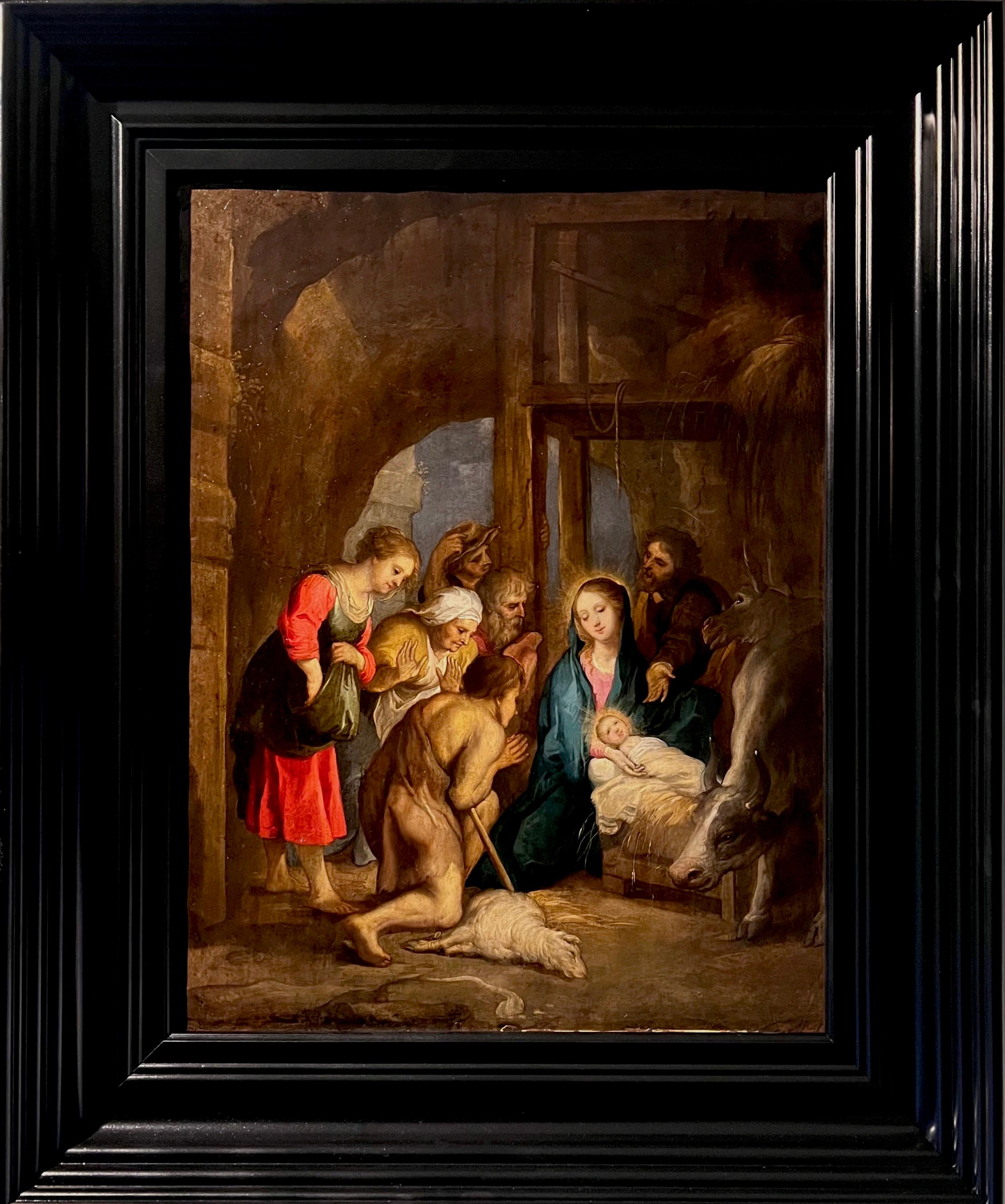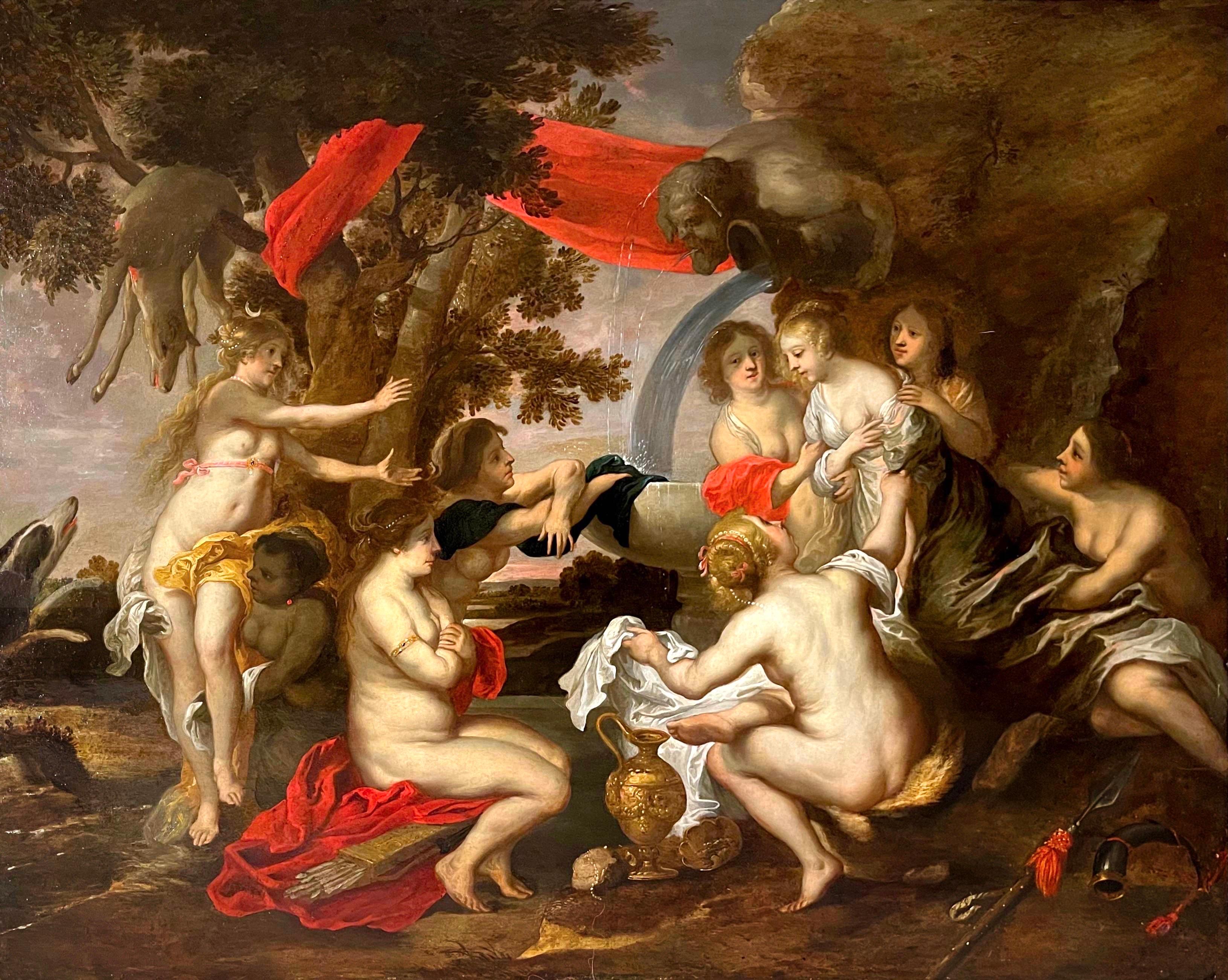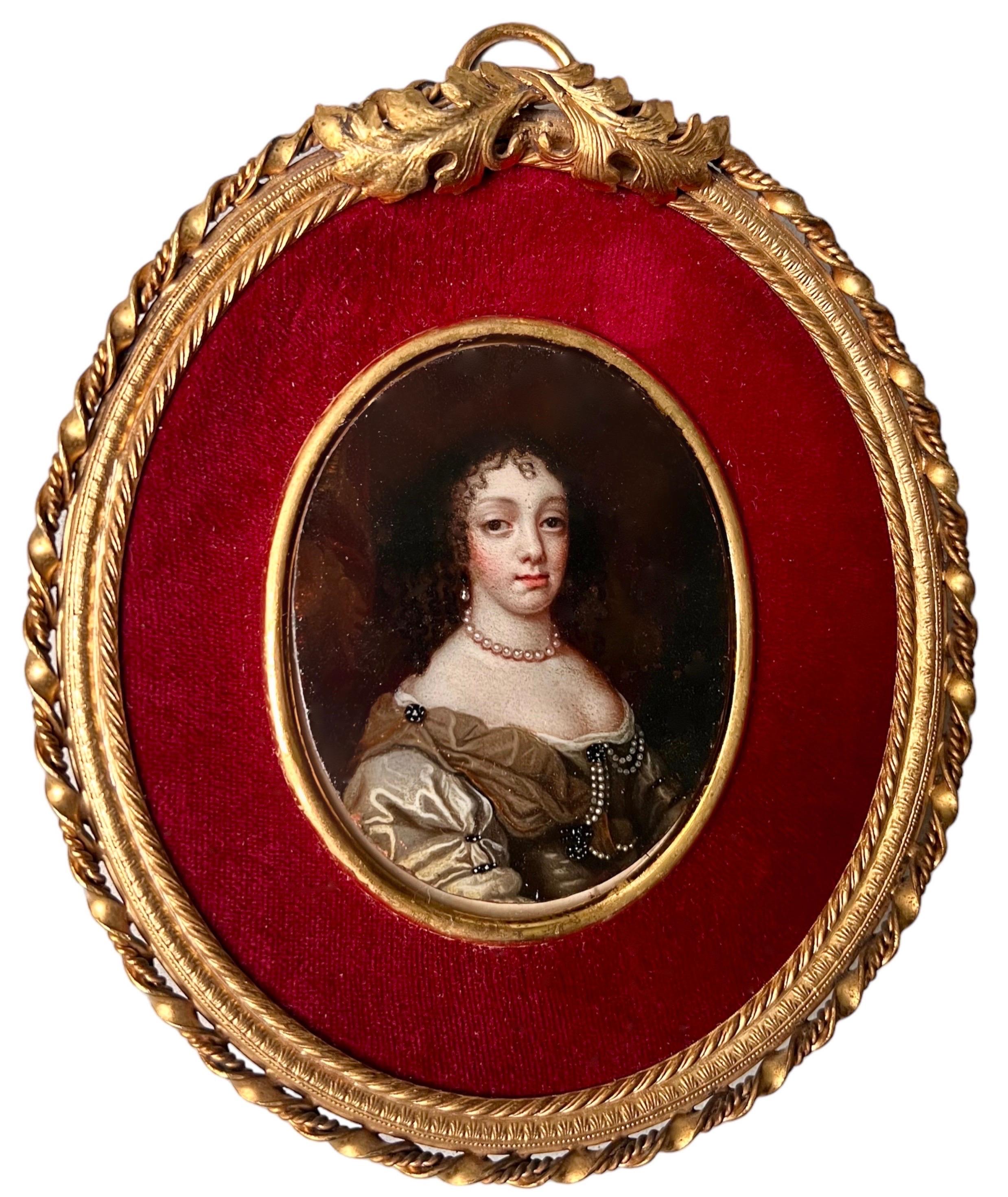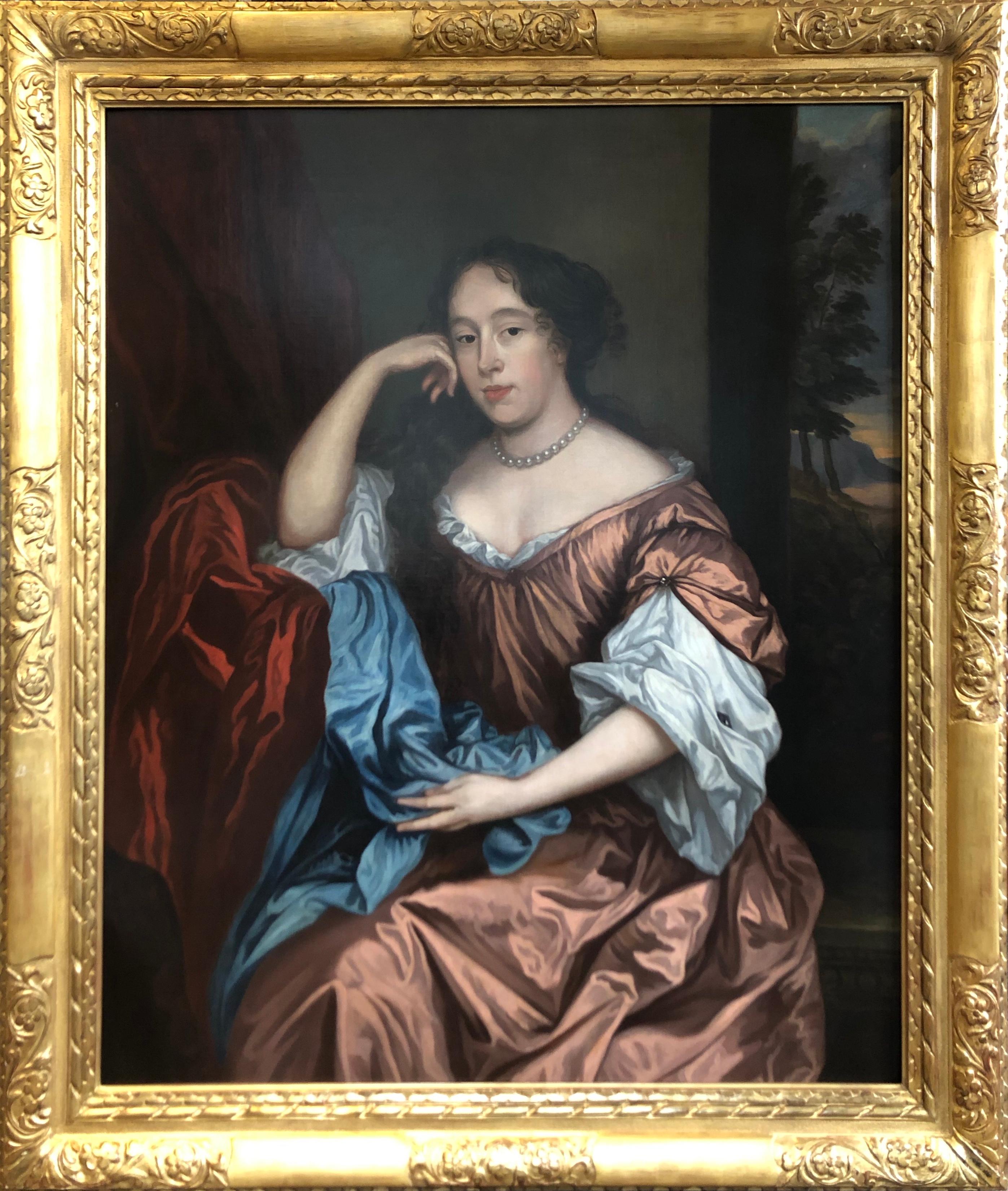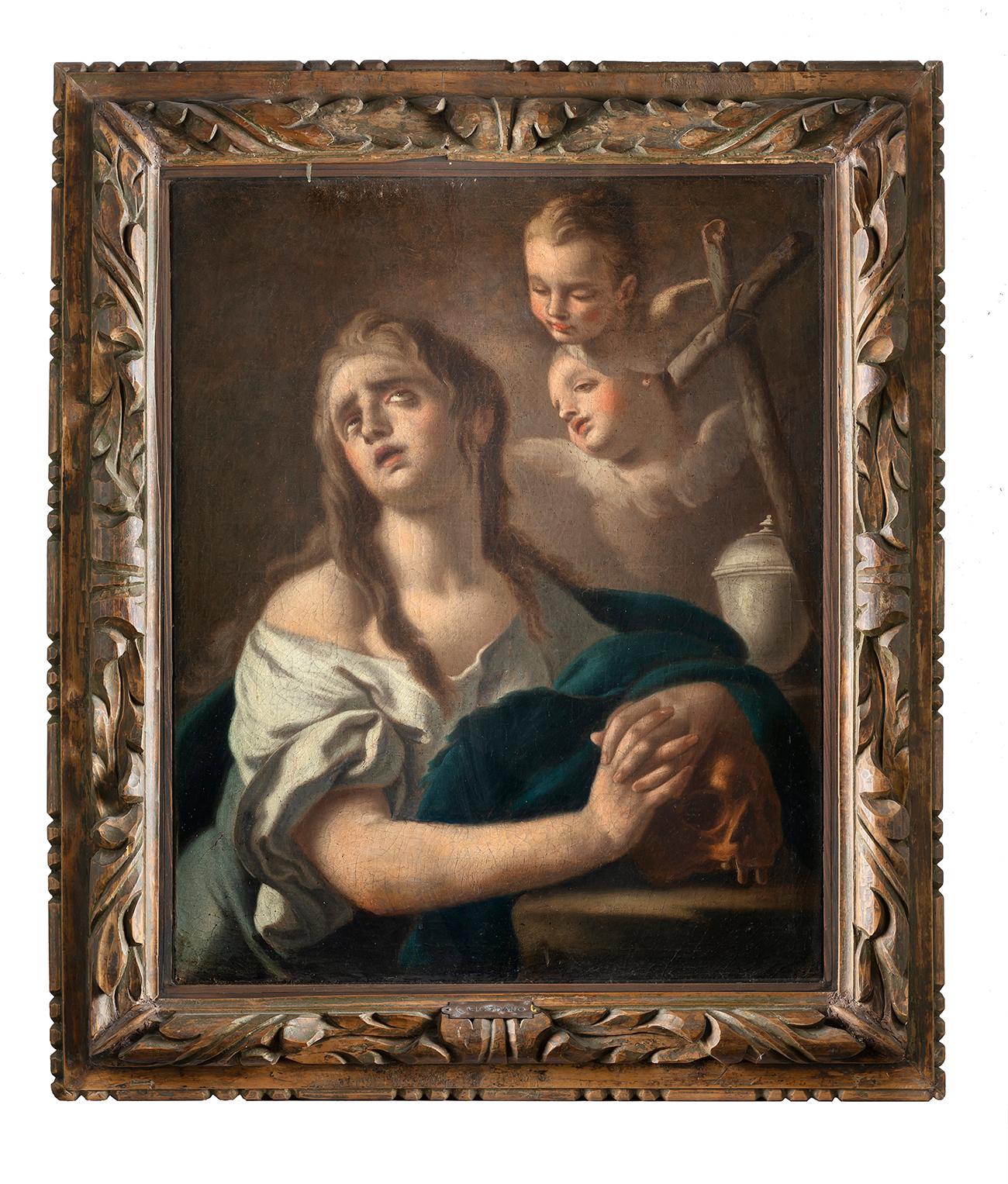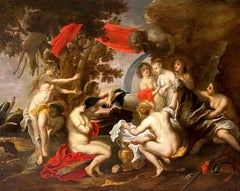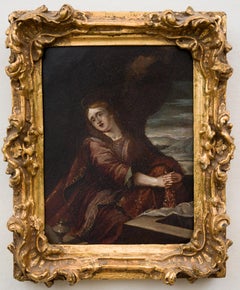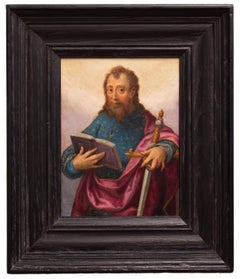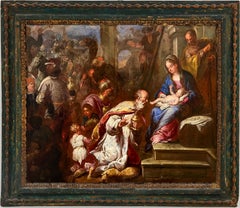
17th century Italian old master painting - Adoration of the Magi - Christmas
View Similar Items
Want more images or videos?
Request additional images or videos from the seller
1 of 18
17th century Italian old master painting - Adoration of the Magi - Christmas
About the Item
- Dimensions:Height: 27.96 in (71 cm)Width: 33.08 in (84 cm)Depth: 0.4 in (1 cm)
- Medium:
- Movement & Style:
- Circle Of:Bernardo Strozzi (1581 - 1644, Italian)
- Period:
- Framing:Frame IncludedFraming Options Available
- Condition:As photographed, ready to hang. Frame with a lovely age-related patina. Painting in good and stable condition, some inpainting visible under uv-light.
- Gallery Location:Antwerp, BE
- Reference Number:1stDibs: LU1423213455282
About the Seller
5.0
Platinum Seller
These expertly vetted sellers are 1stDibs' most experienced sellers and are rated highest by our customers.
Established in 2020
1stDibs seller since 2020
346 sales on 1stDibs
Typical response time: 1 hour
More From This SellerView All
- Large 17th century Flemish old master painting - Diana and Callisto - RubensLocated in Antwerp, BE17th century Flemish Old master painting "Diana and Callisto" attributed to Victor Wolfvoet the Younger Our painting is based on Rubens' great work of...Category
17th Century Old Masters Figurative Paintings
MaterialsCopper
- 17th century Flemish old master painting - Adoration of the Shepherds ChristmasLocated in Antwerp, BE17th century Flemish Old master painting "Adoration of the Shepherds" by Victor Wolfvoet the Younger Surrounded by an elegant and broad black frame, i...Category
17th Century Old Masters Figurative Paintings
MaterialsCopper
- 17th century Old Master miniature of Queen Catherine of BraganzaLocated in Antwerp, BEVery fine old master miniature of Queen Catherine of Braganza Catherine of Braganza's life is a compelling mix of heroism and valuable contributions. ...Category
17th Century Old Masters Portrait Paintings
MaterialsCopper
- 17th century Flemish Old Master - A young boy enjoying a pie, allegory of tasteLocated in Antwerp, BE17th century Flemish old master painting, Allegory of taste The very fine painting depicts a young boy, cheekily tasting a delicious pie. He's looking at the viewer with eyes twinkl...Category
17th Century Old Masters Figurative Paintings
MaterialsCanvas, Oil
- 17th century old master portrait of Emperor Rudolph IILocated in Antwerp, BE"Portrait of Emperor Rudolph of Austria (1557-1619)" circle or studio of Josef Heinz the Elder Emperor Rudolph II, born in 1552, was a visionary ruler whose reign as the Holy Roman ...Category
17th Century Old Masters Portrait Paintings
MaterialsCanvas, Oil
- 17th century Flemish Old master - Silenus feasting - Wine GodLocated in Antwerp, BE17th century old master painting "Silenus feasting", likely studio of Sir Anthony Van Dyck Born in Antwerp in 1599, Anthony Van Dyck entered the studio of Rubens (1577 - 1640) at the age of nineteen. Quickly, the master perceives the talents of the young prodigy and makes him his first assistant. Van Dyck, for his part, has a particular admiration for the man whose name is known throughout Europe. In 1619, he was inspired by a drunken Silenus by Rubens, produced one or two years earlier for a composition on the eponymous theme. This work, now in the Dresden Museum, appears to be the first version of our painting. That work has an illustrious provenance; it was recorded in the private collection of Leopold Wilhelm (Archduke of Austria) in 1662, in 1722 it was bought by the famous German painter Antoine Pesne for the King of Saxony in Dresden (Staatliche Kunstsammlungen Dresden - Gemäldegalerie Alte Meister, Dresden, inventory number 1017). From 1945 until 1955 it was on display at the Pushkin Museum in Moskou, after having been taken by Russia after the Second World War. It was then returned to the Staatliche Kunstsammlungen Dresden where it is still on display. Our painting is of a fine quality and has been painted by a skilled and confident hand. It displays some slight variations in the composition when compared to the original; the legs of Silenus are smoother and less hairy, more humanoid than satyresque. There might also be a pentimento visible at the level of the legs where one observes traces of hair on and under the material. This area can be compared to that of a canvas by Van Dyck kept in Brussels, of a still drunk Silenus whose animal legs are formally treated in the same way as the ones in our composition. Furthermore, the skirt of the figure to the far left has a purplish-red colour in our work, whereas in the first version it appears to be white. There also appear to be differences in the sky, firstly the clouds are shaped slightly different, the sky in our painting has a more vivid colour and there is also a golden hue of a sunset visible to the far left. This treatment of the background appears close to that of a Saint Rosalie, now kept at the Metropolitan Museum in New York and dated 1625, which might offer a reference for dating our painting. In the evanescent aspect, as non finito of its figures, it is interesting to compare our Silenus to a Saint Sebastian, conserved in the Escorial Museum in Madrid. Also, the theme remains rather curious. According to Barnes and Porter, Rubens, like Van Dyck after him, was partly inspired by Book XI of Ovid's Metamorphoses, but a second literary or pictorial source remains unknown (1). For the original composition, Stephan Maaser, art historian, establishes a correspondence between the position of Silenus, referring to that of a Christ at the moment of the Lamentation or the Descent from the Cross (2); the female characters on the left and the male on the right refer more to Mary Magdalene and Saint John than to the Phrygians or the members of a bacchanalian procession. Finally, note that Silenus is not usually a faun. The success of the composition at the time of its public reception and its engraving by Franciscus van der Steen really contributed to the dissemination of the work. At the same time, it testifies to the intense activity of the painter and his studio in Antwerp, before he left to work at the English court. About Silenus: In greek mythology, Silenus was the tutor and foster-father of the wine god Dionysos, who was entrusted to his care by Hermes after his birth from the thigh of Zeus. The young god was raised by Silenus and nursed by the Nysiad nymphs in a cave on Mount Nysa. Silenus was, in essence, the spirit of the treading dance of the wine-press, his name being derived from the words seiô, "to move to and fro," and lênos, "the wine-trough." Once, when Dionysos was travelling through Phrygia, Seilenos became lost and was captured by King Midas. The king treated him hospitably and as a reward Dionysos granted him his golden touch. The artists biography: Born in Antwerp on 22 March 1599, Anthony van Dyck was the seventh child of Frans van Dyck, a wealthy silk merchant, and Maria Cuypers, who was renowned for her embroidery skills. In 1609, when he was ten years old, his parents apprenticed the precocious youth to Hendrik van Balen (1575-1632), a painter of small cabinet pictures and dean of the city's Saint Luke's Guild. Although the length of Van Dyck's stay with Van Balen is not known, it probably lasted three to four years. Van Dyck registered as a master in the Antwerp Saint Luke's Guild on 11 February 1618, by which time he was already in demand as a portrait painter (see the NGA painting, Portrait of a Flemish Lady...Category
17th Century Old Masters Figurative Paintings
MaterialsOil, Canvas
You May Also Like
- Flemish School, 17th Century, Mary MagdaleneLocated in Stockholm, SEFlemish School, 17th Century Mary Magdalene oil on copper 17th century plate dimensions 23 x 17 cm frame 27 x 22 cm Restored by professional art conservator 2022. Provenance: ...Category
17th Century Old Masters Figurative Paintings
MaterialsCopper
- St Paul With Sword and Book, Mannerist School, Oil on CopperLocated in Stockholm, SEMannerism, derived from the Italian term "maneria," which simply means "style," was an artistic movement that emerged in the later years of the Italian High Renaissance, around 1520, and extended into the early 17th century. It is often referred to as the "stylish style" due to its emphasis on self-conscious artifice rather than realistic depiction. Historians debate whether Mannerism should be classified as a style, a movement, or a period. In contrast to the harmonious ideals embraced by renowned artists such as Raphael, Michelangelo, and Leonardo da Vinci, Mannerist painters took a step further and created compositions that were almost bizarre. They introduced fresh color schemes, elongated proportions, and exaggerated anatomy of figures, portraying them in convoluted and serpentine poses. These artists skillfully exhibited their techniques and abilities, aiming to evoke a sense of sophisticated elegance. Among the notable Mannerist painters are Jacopo da Pontormo, Bronzino, Lavinia Fontana...Category
17th Century Old Masters Figurative Paintings
MaterialsCopper
$5,678 Sale Price20% OffFree Shipping - Fine 17th Century Italian Old Master Oval Portrait of Lady on Copper Wooden FrmLocated in Cirencester, GloucestershirePortrait of a Lady Italian Old Master, 17th century oil on copper, framed framed: 8.75 x 7.75 inches painting: 5 x 4 inches provenance: private collection, England condition: very go...Category
17th Century Old Masters Portrait Paintings
MaterialsCopper
- Fine 1700's French/ Dutch Oil Painting on Copper Portrait Man Ruff CollarLocated in Cirencester, GloucestershirePortrait of a Gentleman wearing a Ruff Collar Dutch/ French artist, 18th century oil painting on copper, unframed copper board : 6.75 x 5 inches provenance: private collection, UK co...Category
18th Century Old Masters Figurative Paintings
MaterialsCopper
- Annunciation to the Virgin Attributed to Cornelis SCHUTLocated in Pasadena, CAEarly 17th-century copper painting depicting a religious scene, School Annunciation, Oil on Copper attributed to Cornelis SCHUT, painter of Antwerp (159...Category
17th Century Old Masters Figurative Paintings
MaterialsCopper
$5,000 Sale Price58% Off - 17thC Spanish Colonial School Frame with orig. Painting St. Joseph Jesus ChildBy Spanish Colonial (Peruvian)Located in Meinisberg, CH17th Century Spanish Colonial School (Likely to be School of Cuzco in Peru) - St. Joseph with the Christ Child carrying a basket, housed in its original carved, hardwood frame. • Painted in oil on canvas (laid on to fiberboard), ca.58 x 48 cm • Original frame, ca. 64 x 54 cm • Visible image ca. 52.5 x 42.5 cm Centuries ago this religious painting, depicting St. Joseph with his flowering staff and the Christ Child carrying a basket, was originally displayed in a church or chapel in 17th Century colonial...Category
17th Century Old Masters Figurative Paintings
MaterialsGold Leaf
